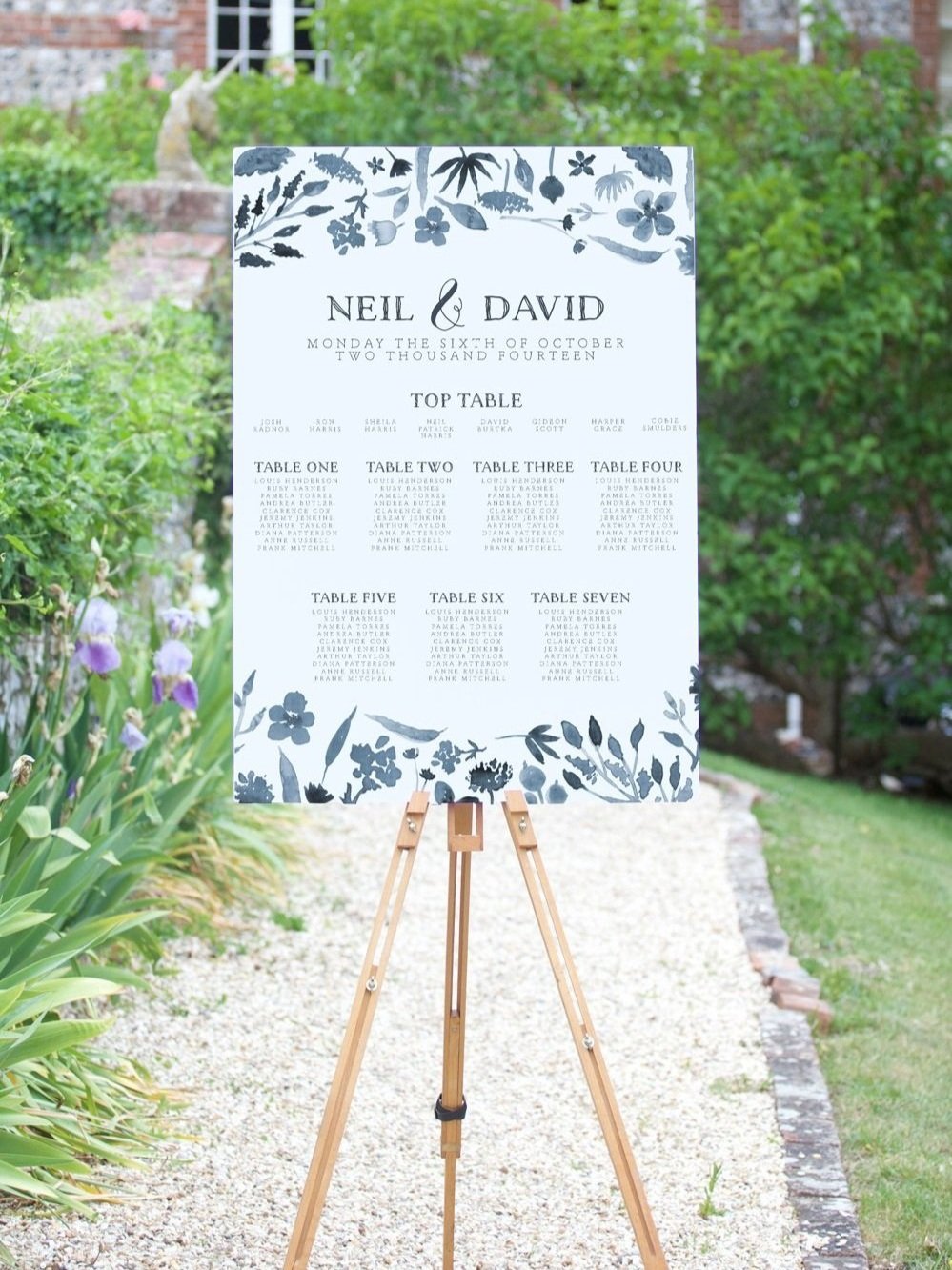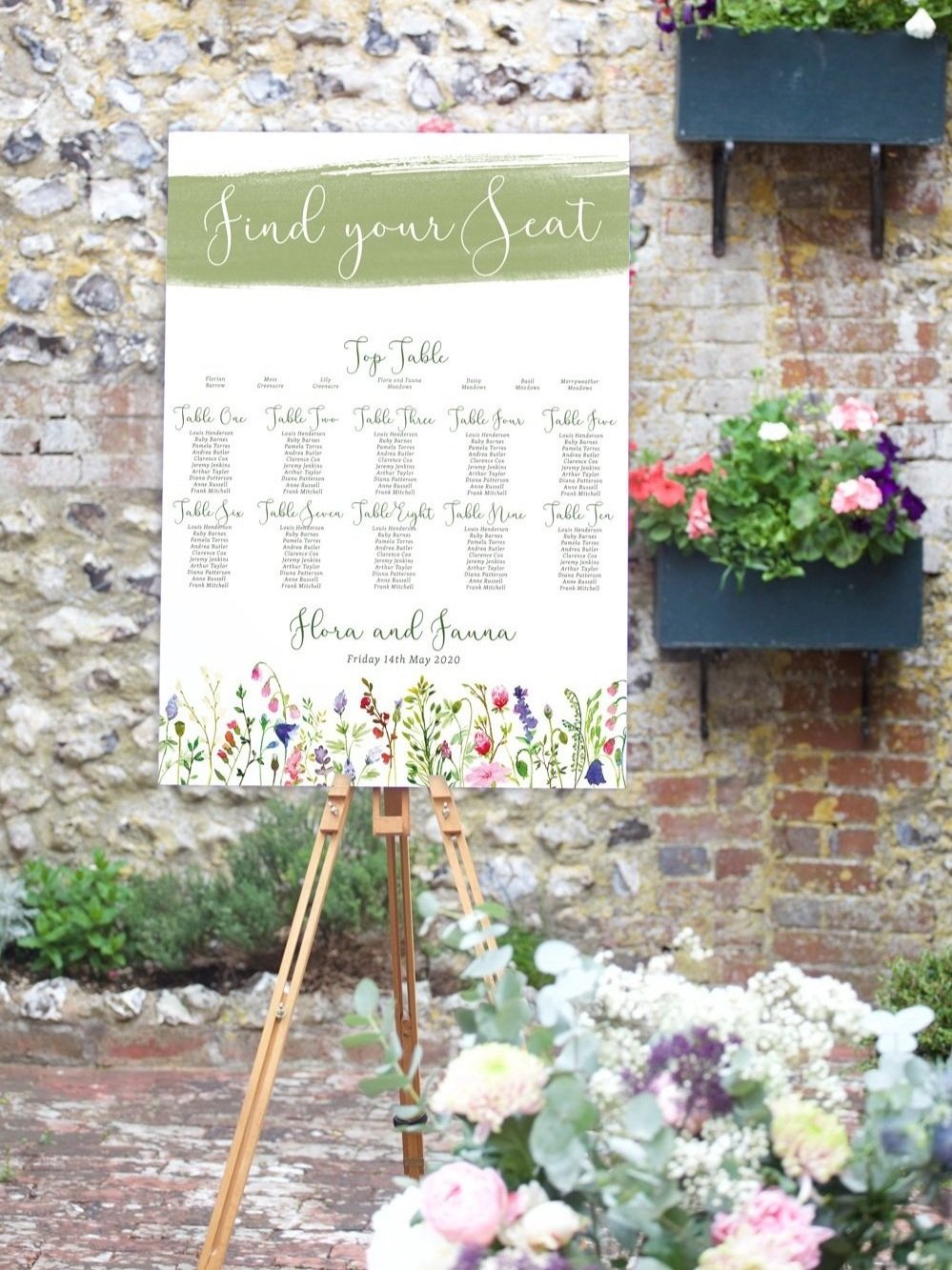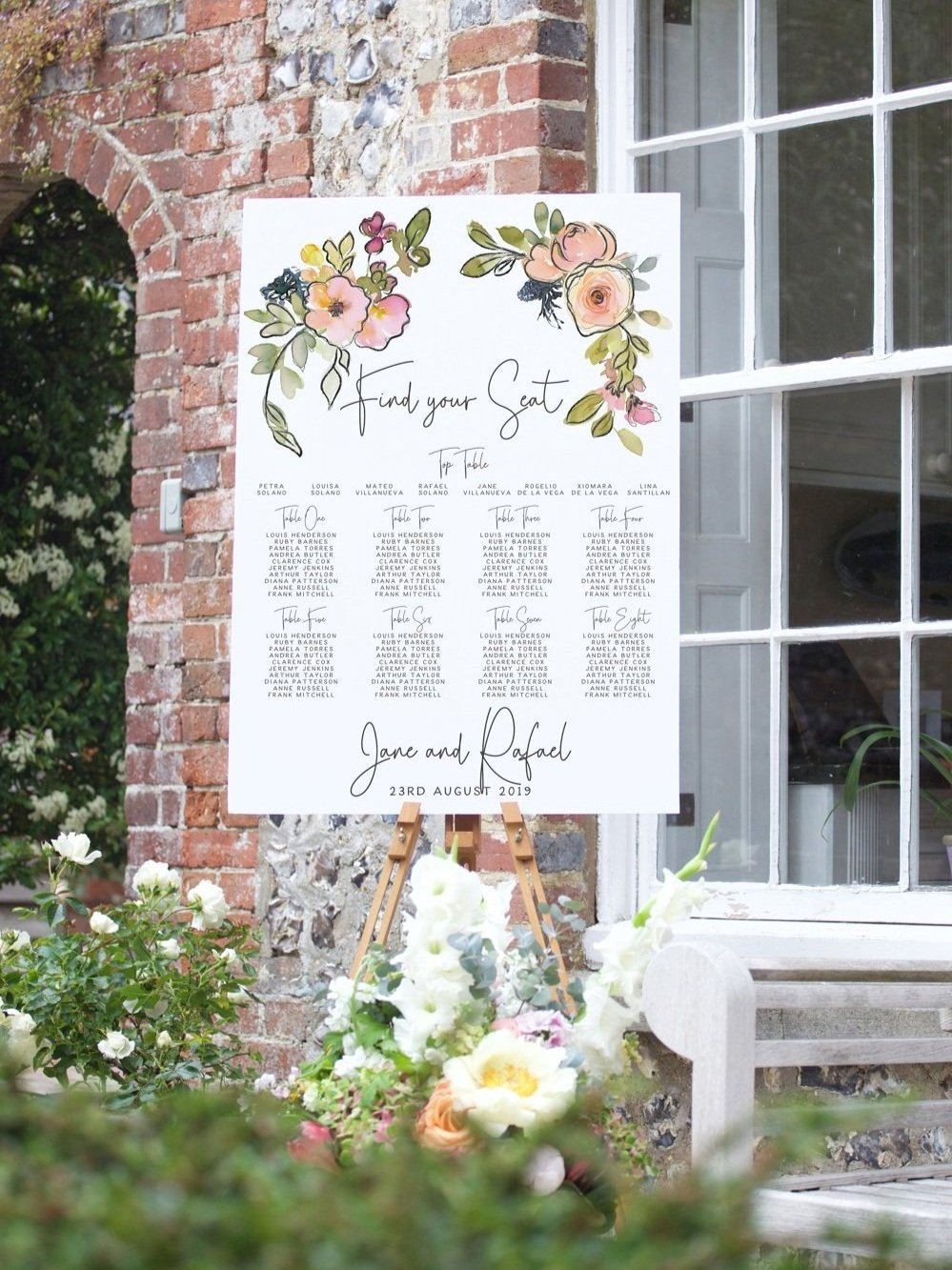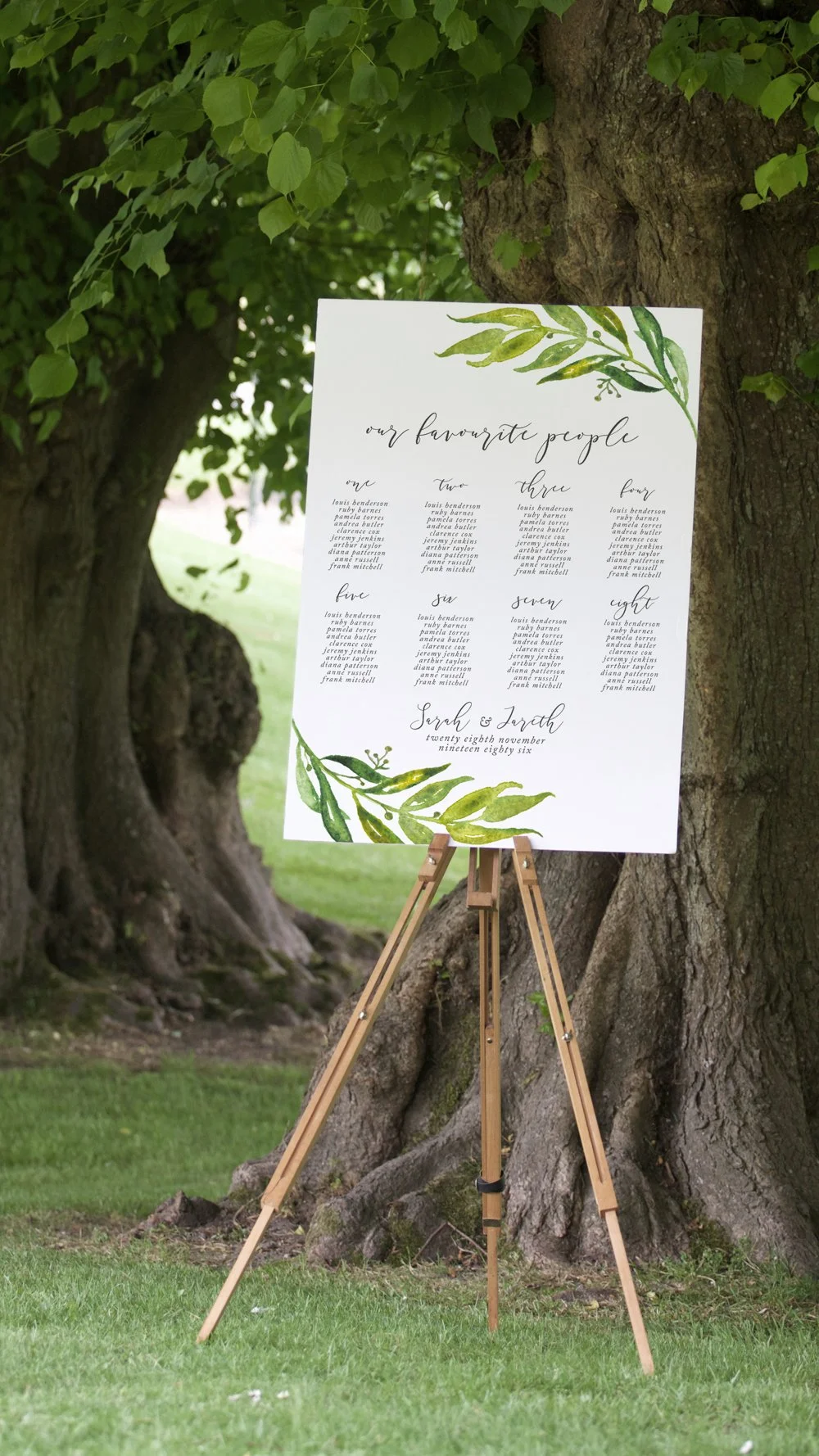Hello there lovely wedding planning couples! Are you feeling a bit overwhelmed by the thought of creating a seating chart or table plan? Don't worry, you're not alone! Seating charts can really be quite the challenge and sometimes a bit of a minefield… but with some tips and tricks, you'll be sorted in no time and have your guests feeling welcome and at ease on the day.
1. start with your floor plan
Before you start assigning seats, it's essential to have a good understanding of your reception venue's layout. Hopefully, your venue should be able to provide a floor plan which marks the key details like the location of the bar, dancefloor, bathrooms, and any other notable features. Maybe there are columns to work around, or if you’re having a tipi wedding you’ll definitely need to consider the big posts holding it all up! This will help you visualise the space and plan out where tables and chairs will be placed.
2. think about where you want to sit
Lots of couples opt for a top table at the head of the room, with them seated in the centre, and their wedding party on either side of them- with everyone on one side of the table looking out into the room. However, you absolutely don’t have to do this if it makes you uncomfortable. You could opt to have you and your wedding party seated around a table just like all of your other guests. A lovely idea is to take some time for just the two of you, and decide to have a sweetheart table! Or, whatever makes you most happy.
3. organise your guest list
Then, it’s time to tackle everyone else! Organise your guest list into groups based on their relationships with each other, you may want to divide people into you and your partner’s families and friends as a starting point. For some guests, this should make assigning them to a seat quite straightforward, and for others, it might highlight some family politics that you need to navigate. This is where that floor plan can come in handy… if anyone needs to be kept separate you can see just how far apart their tables will be.
For anyone who doesn’t slot in easily on a table, consider their varying personalities and interests when deciding who they should sit with. This might help you group people together who will enjoy each other's company and have a great time sitting around the table together.
NOTE: a huge thank you to wedding celebrant Kathryn for her contributions about accessibility in section 4!
4. consider accessibility
It's important to consider the access needs of all of your guests when creating a seating chart. First of all, make sure that tables are easily accessible and not too closely packed together. If you know you have guests with specific access requirements, the best thing you can do is to try not to make any assumptions and ask them if there’s a space/ seating location that might work best for them. For example, guests with mobility issues may prefer to sit closer to the entrance, closer to the bathrooms, or closer to the bar so they don’t have as far to carry their drink! Guests who are neurodivergent or face sensory barriers may like to be on the periphery so that they can easily step out and take a break if they need to.
If you have guests who are D/deaf or who have a hearing impairment, you may need to think about positioning their seats away from background noise (such as kitchens) or making sure they are in a position that will make them feel as involved as possible during speeches. Depending on someone’s specific access requirements - that could mean, being near the amplifier, having a good line of sight to those making speeches so they can lipread, or being able to see their interpreter.
One note to think about, if you are seating someone somewhere specific to make sure they can access and enjoy your wedding, it’s worth making sure they are still sat with others who they know (or who you would have sat them with anyway) it is super-othering to realise you’re sat somewhere where you’re only accommodated, not included.
This may sound like a LOT to think about, but remember that your guests will be the expert in what they need, so don’t feel like you have to guess - ask them what would work best.
A note on the table plans themselves… these are designed as larger boards and will automatically have larger size type so they should be clear and accessible by default. However, if you or your guests have specific access requirements around text, colour, and contrast, please don’t hesitate to let me know and I will design with those needs in mind!
5. start with tables and move onto seats
When you’ve figured out the layout of all of your tables and know how many seats will be at each, you can figure out how to group everyone together. You might even find that groups form organically, if you have two families of four who get along well, pop them on an 8-seater table and you’re set.
Once tables are boxed off, you can move on to assigning the seats around them. Think about how you’d like to arrange everyone around the table, for example, you could seat couples next to each other, or have them opposite one another.
Remember, creating a seating chart is just one part of planning a successful wedding reception. Don't stress too much about it - your guests will have a great time regardless of where they sit. They’ll also most likely only be in their seats for a few hours as you all enjoy the wedding breakfast! Once everyone has eaten, they’ll be back to mixing and mingling for the rest of the evening and having an absolute ball. So don’t let it worry you, and make sure you focus on each other.









